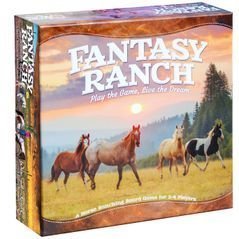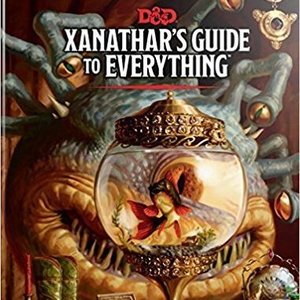
Above and Below
Tabletop Game
Your last village was ransacked by barbarians. You barely had time to pick up the baby and your...
BoardGames StoryGames LaukatGames

Blood Rage
Tabletop Game
"Life is Battle; Battle is Glory; Glory is ALL" In Blood Rage, each player controls their own...
Miniatures BoardGameGeekGreatness

Fantasy Ranch
Tabletop Game
Welcome to Fantasy Ranch! Kick off your boots and pull up a chair for a game where all your dreams...
Pathfinder: Dark Waters Rising: Vol. 1
Jim Zub and Andrew Huerta
Book
The warrior Valeros can rely on his sword arm and his friends, the mysterious sorceress Seoni, qu...

A World Aflame: Interwar Wargame Rules, 1918-39
Mark Stacey and Paul Eaglestone
Book
Often called the "Pulp Era", the years between the two World Wars have seen a tremendous surge in...

Mechs vs. Minions
Tabletop Game
Mechs vs. Minions is a cooperative tabletop campaign for 2-4 players. Set in the world of Runeterra,...

Nova Aetas Renaissance
Tabletop Game
Nova Aetas Renaissance is a cooperative tactical boardgame set in a fantastic and dark Italian...

Xanathar's Guide to Everything (Dungeons and Dragons 5th Edition)
Tabletop Game
Explore a wealth of new rules options for both players and Dungeon Masters in this supplement for...
dungeons and dragons tabletop roleplaying game dnd d&d
Dean Gregory (18 KP) rated Scotland Yard in Tabletop Games
Jun 5, 2019
The board is a map of London divided into numbered stations and linked together by coloured lines, depicting routes and different modes of transport - yellow for taxis, blue for buses and red for the underground. There are also a handful of black routes for ferries, which are available only to Mister X under special rules.
The mechanic of a player moving in complete secret on a tabletop game is one I never would have thought was possible, but Scotland Yard manages to pull it off, and make it work well. Mister X plots their movements with the use of a special pad and paper by writing down the station number they occupy, covering it with the ticket they used to make their move. This is the only clue the detectives have as to where X might be. It works extremely well.
Mister X also has access to two special tickets - a X2 ticket allows them to make two moves in one, and a black ticket allows them to use any mode of transport, with the added bonus of showing them to take ferry routes. Smart use of these powers is necessary to get out of scrapes, as they also have to reveal their location every 5 moves, starting with move 3.
Detectives have a limited number of tickets for each mode of transport, so in order to win they need to coordinate their movements so they don't waste tickets unnecessarily. However, if there are less than 4 detective players, each detective not controlled by a player is replaced with a police officer who is universally controlled. The police can move freely without the need for tickets, making them far more versatile than detectives. This is presumably to balance the difficulty for smaller teams, but it ends up making a game with all 4 detectives considerably harder than a game with only 3. The level of care and consideration that must go into each move makes playing the detectives a completely different experience to playing as Mister X.
I came into the game thinking it would be heavily skewed in Mister X's favour. After all, most of the moves they make are in secret, they're completely unhindered by tickets, and they get a couple of special powers to boot. On top of that, the detectives first two moves are complete guesswork, so X gets a head start. In practice though, staying 3 steps ahead of the detectives is vital to survival, and when they work together well it can be ready for X to put themselves in an impossible situation. It takes careful planning to stay ahead of the game.
There is a beginner mode which is aimed at younger players. The differences are that the number of rounds Mister X needs to survive for is 13 instead of 22, red underground routes are unavailable to all players, and most of all, Mister X remains in the board all game, only disappearing on the turns where he would appear in the regular game. I can't really offer an opinion on this version, but I can see the appeal of it, even if it defeats the concept of the game a bit.
This is a bonafide classic, and a solid challenge no matter which role you take on. As long as the game doesn't devolve into a series of guesses and lucky breaks (which, due to the nature of Mister X's movements, can be a regular issue), it offers an evening of smart gameplay with a solid replay value.

This War of Mine: The Board Game
Tabletop Game
This War Of Mine: The Board Game is the tabletop adaptation of the award-winning video game that...

